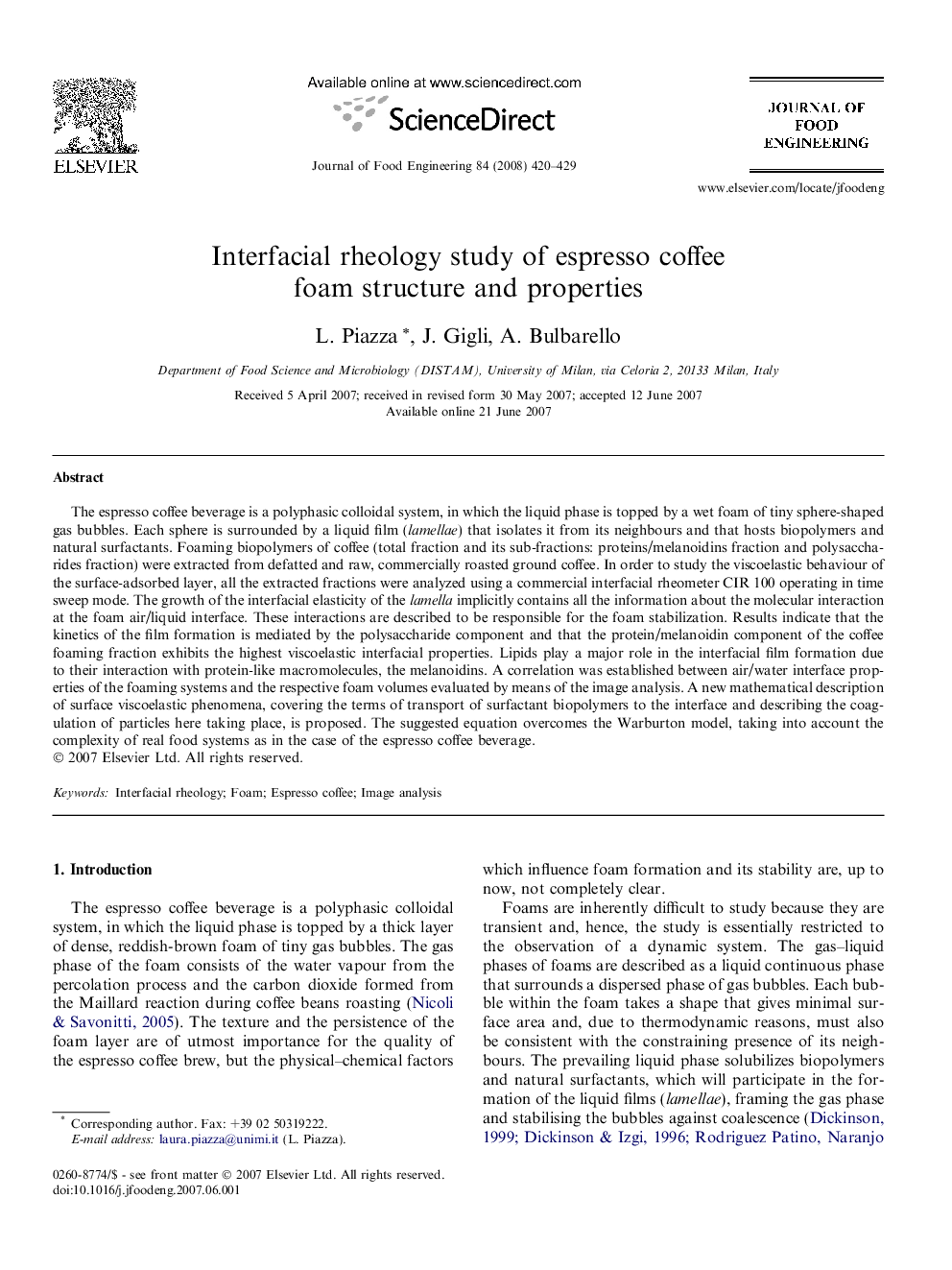| کد مقاله | کد نشریه | سال انتشار | مقاله انگلیسی | نسخه تمام متن |
|---|---|---|---|---|
| 225991 | 464518 | 2008 | 10 صفحه PDF | دانلود رایگان |

The espresso coffee beverage is a polyphasic colloidal system, in which the liquid phase is topped by a wet foam of tiny sphere-shaped gas bubbles. Each sphere is surrounded by a liquid film (lamellae) that isolates it from its neighbours and that hosts biopolymers and natural surfactants. Foaming biopolymers of coffee (total fraction and its sub-fractions: proteins/melanoidins fraction and polysaccharides fraction) were extracted from defatted and raw, commercially roasted ground coffee. In order to study the viscoelastic behaviour of the surface-adsorbed layer, all the extracted fractions were analyzed using a commercial interfacial rheometer CIR 100 operating in time sweep mode. The growth of the interfacial elasticity of the lamella implicitly contains all the information about the molecular interaction at the foam air/liquid interface. These interactions are described to be responsible for the foam stabilization. Results indicate that the kinetics of the film formation is mediated by the polysaccharide component and that the protein/melanoidin component of the coffee foaming fraction exhibits the highest viscoelastic interfacial properties. Lipids play a major role in the interfacial film formation due to their interaction with protein-like macromolecules, the melanoidins. A correlation was established between air/water interface properties of the foaming systems and the respective foam volumes evaluated by means of the image analysis. A new mathematical description of surface viscoelastic phenomena, covering the terms of transport of surfactant biopolymers to the interface and describing the coagulation of particles here taking place, is proposed. The suggested equation overcomes the Warburton model, taking into account the complexity of real food systems as in the case of the espresso coffee beverage.
Journal: Journal of Food Engineering - Volume 84, Issue 3, February 2008, Pages 420–429